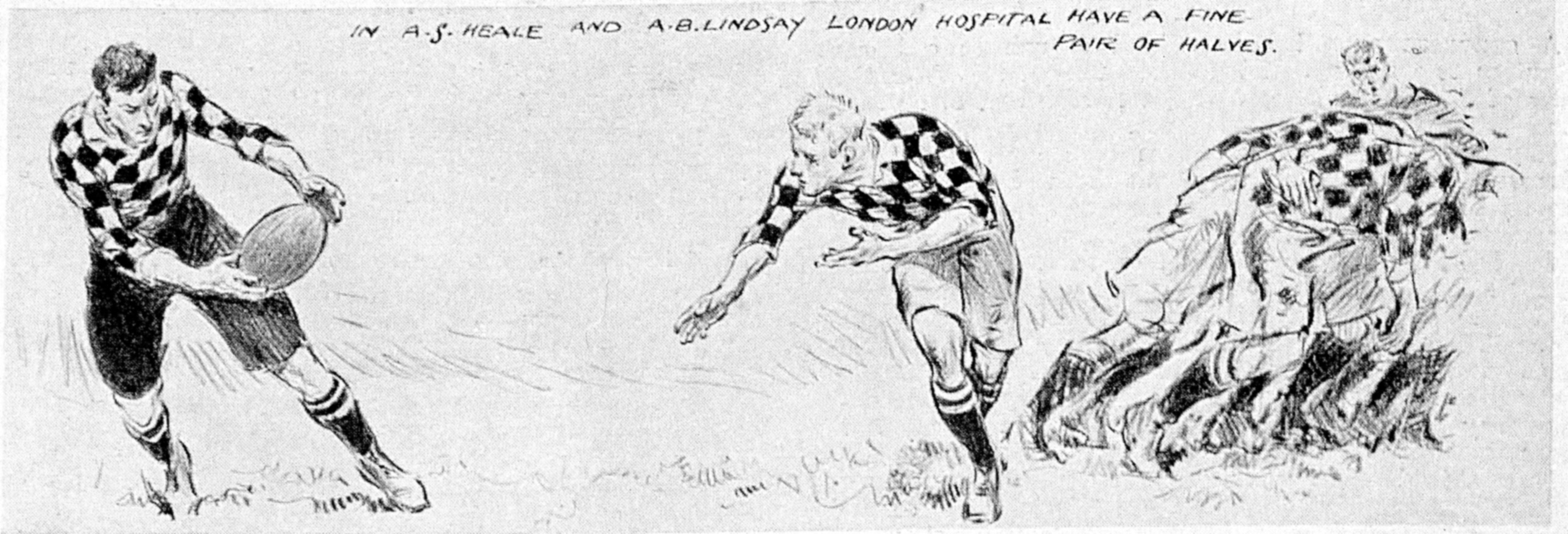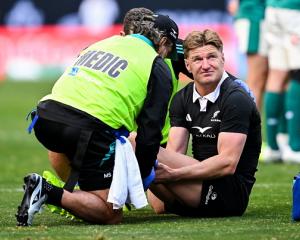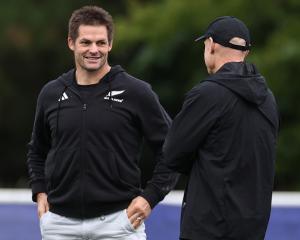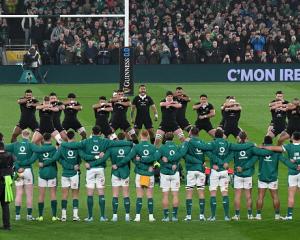
For some in Dunedin, they were the years of study and play, a concentration during the week on learning the mysteries, method and magic of medicine and at weekends on turning out for the University of Otago Rugby Football Club, then having its first golden age.

Many of those who saw service, usually with the Royal Army Medical Corps, during the war left Dunedin for Britain towards the end of 1907. Their names used to pepper match reports in Dunedin; now they became rugby names in Britain.
There were the well-known, such as Donald Macpherson, the wing who had played for New Zealand, but there were also players who had been unable to make the Varsity A team but found their rugby maturity in Britain. Alex Palmer, for example, a wing who could make only the Bs in Dunedin but who played for England in 1909. Another, Alexander Lindsay, known as "Bonar", played for the Bs and the Cs during the Dunedin winter but then had two seasons gracing the Scottish national team.
Macpherson, who played for the All Blacks in their first test in Dunedin, in 1905, became known as "Wee Mac" playing for London Hospital and for Scotland in 1910.

The Dunedin pals' rugby developed in London, where each of the teaching hospitals had strong teams that footed it on a weekly basis with the likes of Harlequins and Rosslyn Park and other familiar London clubs. London Hospital, in the Whitechapel area in the east, during the 1908-09 season had nine Otago players in its top side. One of the popular weeklies, the Illustrated Sporting and Dramatic News, once featured a page of hospitals rugby with Otago men prominent.

The idyllic days could not last. When the war came, the footballing doctors became captains in the RAMC, attached to regiments wherever there was fighting, from the Western Front to the Middle East to Africa. One of the best known of them, George Martin Chapman, a member of the pioneering jurist family in New Zealand, had gone from Otago to Cambridge, gained his blue there, then went to London Hospital and played for both the hospital team and for Harlequins. He was also unbeaten in inter-hospital heavyweight boxing.
His strength and sporting skill saved the life of a 62-year-old French fisherman early in the war. Chapman was posted at a hospital in Boulogne on the channel coast when a small fishing vessel was wrecked in a gale. The skipper got his crew away safely but he, unable to swim, stayed with the boat and those watching from shore realised he needed rescuing. Two British soldiers with lifelines attached swam out but neither could reach the boat and had to be hauled back in. The skipper jumped into the sea, apparently in the hope of being washed ashore, but was soon in difficulty. Chapman stripped to the waist, took a lifeline and swam out "with extraordinary strength through the breakers", a report said. The French Government awarded Chapman the gold medal "Pour Courage et Devouement" (for courage and dedication) and he was commended in British routine orders.

"Bonar" Lindsay (Bonar was his third given name) was dispatched to Mesopotamia, where the Allies mounted a trying campaign against Ottoman forces, and where disease was a more prolific killer than bullets. Lindsay was attached to the 32nd British General Hospital and had the significant consolation of meeting his future wife, Ethel Goddard, who was a sister with the Queen Alexandra's Imperial Military Nursing Service. They were married while on leave in Bombay (Mumbai).
Arthur (known as Jimmy) Heale, who had been a first five-eighth for various teams, formed an effective inside back combination with Lindsay and reckoned to have been close to England selection, was also dispatched to a post that even in such a war was regarded as hardship. He had made the army his career and was in India when the war began and was promptly sent to East Africa, where malaria was rife. He won the Military Cross in 1917, went to South Africa to recover from one bout of illness and was in New Zealand recovering from another when the war ended. Heale served in the World War 2 as well and was for a time director of medical services on the much bombed George Cross island, Malta.
Alex Palmer was a surgeon in a hospital in France throughout the war and later became a noted obstetric and gynaecological surgeon in London as well as holding numerous consulting and academic roles. When he died at his Surrey home in 1963, the British Medical Journal recalled his rugby as well as his surgical skill.
"There must still be many who now, alas, can only watch rugby who will remember clearly the bangs and bruises received from flying legs or a powerful hand-off when trying to tackle the sturdy figure of Alex Palmer," the journal's obituarist wrote.
Ernest Charles Lindsay, younger brother of "Bonar", also went from the University Oval and other club grounds in Dunedin to the playing fields of England. Though he did not achieve the playing level of his brother, he was the regular fullback for the London Hospital XV and was said to have been "of magnificent physique". He too was a captain in the RAMC and served mostly in hospitals on the Western Front, although he had six months in general surgery at London Hospital in 1916.
Like Jimmy Heale, Ernie Lindsay also served in the World War 2 and although ill himself, he was in charge of the London Hospital's emergency medical service during the great air raids on London of 1940 and 1941. He died in 1943 and the Royal College of Surgeons wrote of him: "Lindsay was a typical New Zealander of Scottish stock."
- Ron Palenski











